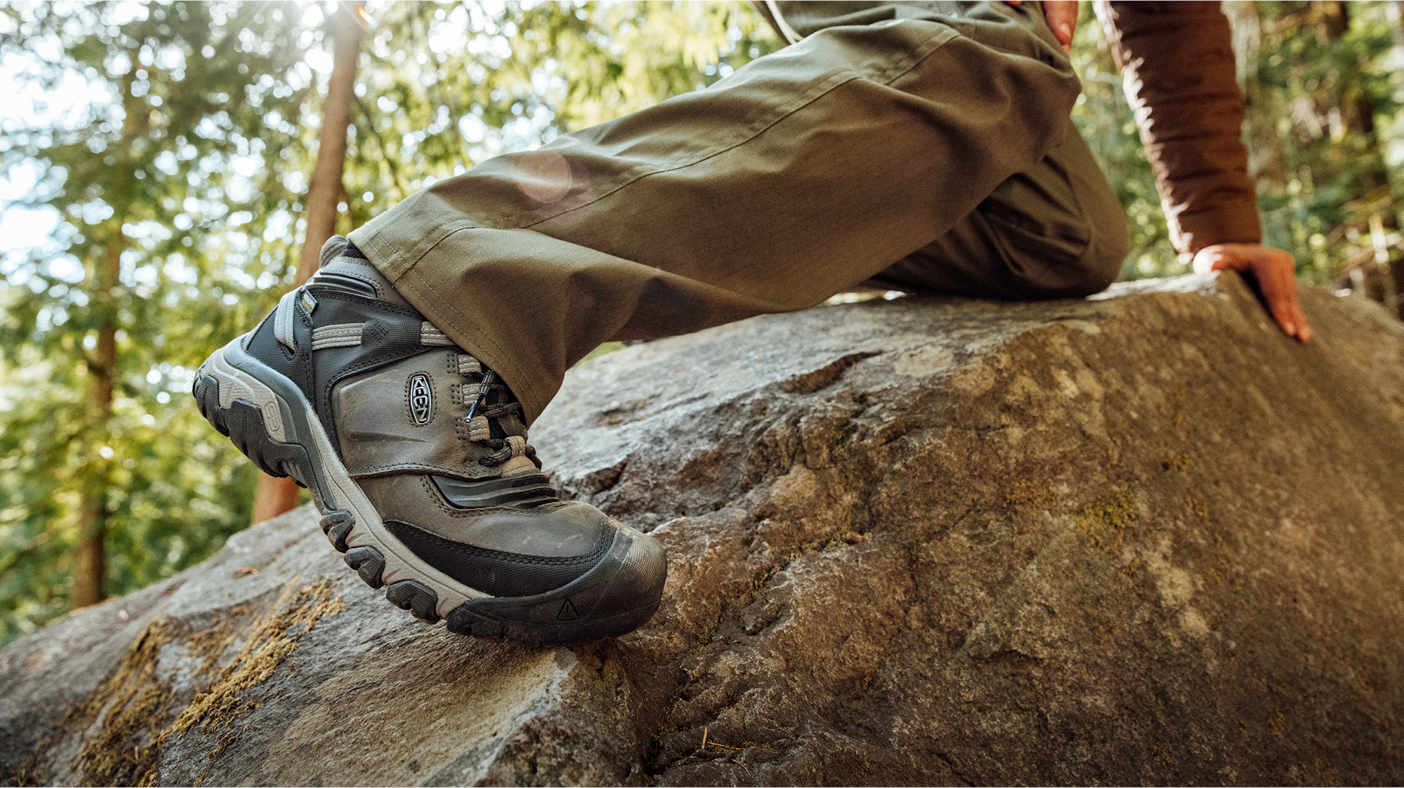How to prevent and treat foot blisters
Outdoor Activities | March 28, 2024
SAIL
April 18, 2023

Walking the trails is an invigorating outdoor activity that can be done all year round. Hence the importance of taking the time to choose the right piece of footwear that will follow you step by step. When facing the hiking boots vs. shoes question, which model should you choose? Read our tips to help you make the right choice.
In this article, you will learn more about:
Lighter hiking boots or hiking shoes are designed for day hikes or shorter overnight backpacking trips on moderate terrain.
For the mountains or longer hiking trips on tougher terrain, like Killarney’s La Cloche Silhouette Trail, heavier hiking boots will absorb the shocks of a heavy load and support you in the right places on rocky ground.
The big advantage to lighter hiking boots and hiking shoes is you’re not lugging around as much weight on your feet – literally. It feels heavier down there and it’s compounded with every step you take. The old backpacker’s adage that one pound on your feet equals about six pounds on your back still holds weight. Taking a load off your feet allows you to keep a quicker pace and use less energy.
Lighter shoes also allow you to be more nimble on your feet. That makes a big difference if you’re dodging rocks, boulders and logs.
Going with low cut shoes saves even more weight, and less bulk around the ankles makes them cooler on your feet. Low cuts feel more like a running shoe with winter treads.
The trade off with low cuts is less ankle support and protection from abrasion. For day trippers hiking on a flat trail with snacks and water on their backs, it’s not an issue. For trekking in the mountains, you may want to consider heavier hiking boots, especially if you’re hauling camping gear and heading into the outer regions.
Heavier hiking boots, whether they’re made of full grain leather or a combination of leather and synthetic materials, are designed for more challenging conditions. They are, well… heavier, but there are payoffs for the extra weight.
Ample rands or rubber bands around the uppers take the brunt of scuffs and abrasion. As for the outer soles, expect deep aggressive lugs and a pronounced heel for traction on loose terrain. Cut high above the ankles with rigid uppers, they provide strong ankle support to help prevent trip killing sprains. To top it off, padded collars keep annoying little pebbles from creeping into your hiking boots.
Now, let’s talk about shanks. A shank is what gives soles their rigidity. Lighter hiking boots and hiking shoes are built with half to three quarter shanks, which make them flexible and easy to walk in like a running shoe. Heavy hiking boots are equipped with full shanks that are completely rigid so they’ll support your weight when you’re edging up rock slabs or over boulders. Full shanks also absorb the added impact of a loaded backpack on your feet when you’re hiking on a rocky trail or grunting it through moraine.
Ask yourself the right questions when shopping for lightweight and short to tall hiking boots and hiking shoes. This will help you narrow down your choice to a few models that really suit your needs.
There are many hiking boots that fit into categories somewhere between heavy rigid boots and light low-cut day hikers. It all comes down to where you’re headed most of the time and keeping it as light as possible without compromising support and durability.
Lighter hiking boots are good to go right out of the box. Heavy hiking boots, on the other hand, may need some break-in time before a long hiking trip. Wearing them on a few shorter day hikes first could mean the difference between tending blisters and relaxing by the fire with a warm drink.
Most of all, remember to also gear yourself up with a good backpack and hiking accessories that are essential.